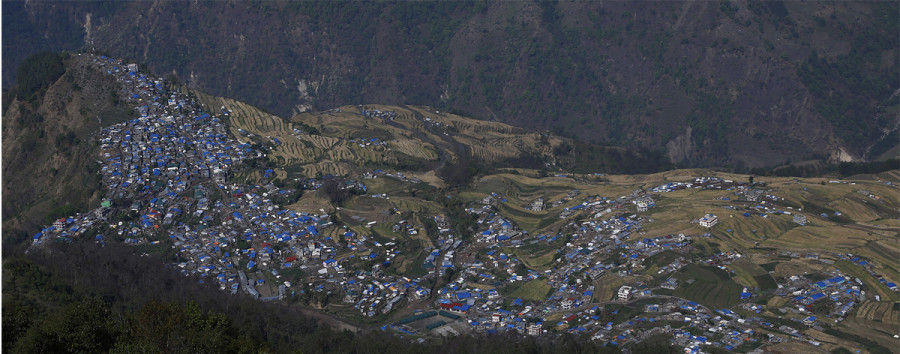Miscellaneous
Barpak, a year later
The epicentre of last year’s earthquake, Barpak, a village located about 60kms north of Gorkha’s headquarters, is slowly transforming. From a nearby hilltop, the blue of the tin roofs and tents, against the green of the hills beyond make for a magnificent setting. The plight of locals, however, remains the same: among a total of 447 households, about 300 households are still living in makeshift shelters built after the quakes rattled this village.
Text & photos: Prakash Timalsena
The epicentre of last year’s earthquake, Barpak, a village located about 60kms north of Gorkha’s headquarters, is slowly transforming. From a nearby hilltop, the blue of the tin roofs and tents, against the green of the hills beyond make for a magnificent setting. The plight of locals, however, remains the same: among a total of 447 households, about 300 households are still living in makeshift shelters built after the quakes rattled this village.


Seventy-two people lost their lives at Barpak; thousands were injured—hundreds are still on the treatment table; and almost all of the families lost their households.


One year on, Barpak have gotten little aid from the government but are determined to rebuild themselves. “We—all the political parties, social workers, and locals—have been collectively working, by day, by night, on rebuild Barpak,” says Sukbahadur BK, chairperson of UCPN Maoist, Barpak.

Barpak now reflects a stark contrast between the haves and have-nots. Some of the houses that were in ruins have already been rebuilt—most of those houses belong to the lahures and those comparatively wealthy. But those of the have-nots continue to struggle.

“We have heard on the radio that the government will help us rebuild our structures but we are still living under the tents,” says a local, Min Gurung. The fact that it has been a year since the earthquake sprang from under their feet is not lost on these Barpakis, but like the rest of the country, there is little they can do but wait.







 29.12°C Kathmandu
29.12°C Kathmandu









